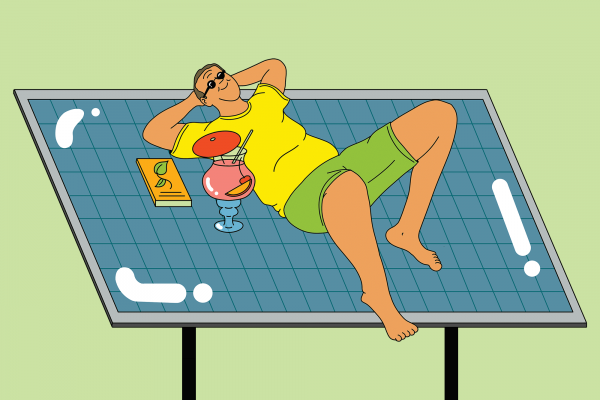Last fall, the town of Huntington, W.Va., made national headlines when 27 people overdosed on heroin within four hours. Huntington’s blue-collar West Virginia county has since been dubbed the “overdose capital of America.” With an overdose death rate ten times the national average, it serves as the backdrop of Netflix’s startling new documentary, Heroin(e).
“Lord, when did we see you addicted?” Sojourners asks this question on the cover of the December 2017 issue. And it’s one that Jan Rader, Huntington’s fire chief, answers every day. As she drives down the streets of the worn city, she points to houses, gas stations, and fast food restaurants — all places she’s been called to for an overdose. “This white house right here,” she says, pointing to a one-story house with a large “Private Property” sign and a peeling paint job. “We had two deaths in that house in 2015.”
With sirens wailing through the opening credits, Heroin(e) could have easily been just another addiction documentary: gripping, poignant, and void of hope. But it isn’t, largely due to the “e” that has been added to the name of the drug that claimed 64,000 lives in 2016 alone. The additional letter shifts the film’s focus from drugs to life-savers — in this case, three heroines.
Patricia Keller is a Family Court Judge in the Cabell County Courthouse. In 2009, she established an Adult Drug Court in Huntington where she helps low-level drug offenders overcome their addiction and stay out of jail. With short blonde hair and dark-framed glasses, Judge Keller doesn’t take “no ma’am” as an answer.
“One thing that’s very, very important in drug court is that you show up,” Judge Keller says to Selena, a new participant with brown hair and a pink jacket. “It ranks right behind being honest. Honest first, show up second.”
The third expectation of course, is that they try not to use drugs. Judge Keller is mindful that relapses happen — to her, it’s honesty about when they do that is crucial.
Necia Freeman knows first-hand what relapse looks like. As a volunteer with Brown Bag Ministry, Freeman drives her van through the streets of Huntington late at night, handing out food and hygiene products to young women working as prostitutes. Many of the women she encounters struggle with addiction, as well as periodic homelessness.
Freeman felt called to get involved when she read in the newspaper that a young woman had been found murdered in a cornfield in Huntington. Her original plan was to hand out brown bag lunches with a gospel tract inside.
“I just thought they would just sit on a step and read a tract and get some food and get Jesus and everything would just turn out awesome,” she says. “And it didn’t turn out that way.”
She’s gained a deeper understanding of addiction through befriending the women and helping them get into shelters and rehab centers. Once she asked a woman what made heroin so powerful. “The only way I know how to explain it to you is that getting high on heroin is what it would be like for you to kiss Jesus,” the woman said.
Despite witnessing so many people die in search of that high, Jan Rader, the first female deputy fire chief in West Virginia, remains hopeful.
“The only qualification for getting into long-term recovery is you have to be alive,” she says.
Rader encourages first responders to carry Naloxone, the drug that can save a person in the event of a narcotic overdose, for that reason. “I don’t care if I save somebody fifty times. That’s fifty chances to get into long-term recovery.”
In a time when addicts are treated as criminals, Heroin(e) rightly recognizes that addiction is not a reflection of ill intent, but of brokenness. In Huntington, where many people work labor intensive jobs, addictions begin with an injury and a prescription. And as the increasing awareness of the addictive nature of opioids has made the pills harder to come by, heroin has stepped in as a substitute.
“When you add hopelessness and unemployment, and lack of education on top of all that, it’s kind of like a recipe for disaster,” Rader says.
While the film is short, only 39 minutes in total, it beautifully captures the strength and resilience of these three women as they work for healing on the front lines of the heroin epidemic. What makes the women so compelling is that the focus of their work, and by default the focus of the documentary, isn’t solely on breaking addiction, but also on building relationships.
“You know, coming from the life that I’ve lived, I’d have never thought that I’d say this,” a young man wearing dog tags says to Judge Keller at his drug court graduation. “But I truly believe I made a friend in you, for life, a public official.”
In many ways, drug court functions like church. The men and women sit side-by-side in pews. They welcome newcomers. They hold each other accountable. And though there is no set time for a “passing of the peace,” when they cheer on those who have remained sober, it looks like a place of forgiveness.
Heroin(e) doesn’t glamorize addiction or overdose. The footage shown is raw, unsettling, and painful. But with the opioid crisis having recently been declared a national health emergency, it is an important film to view and engage with. Like Chief Rader, Judge Keller, and Necia, we must recognize that addiction is best treated with compassion, not condemnation. Heroin(e) serves as a reminder that recovery is possible where faith, hope, and community converge.
Got something to say about what you're reading? We value your feedback!







